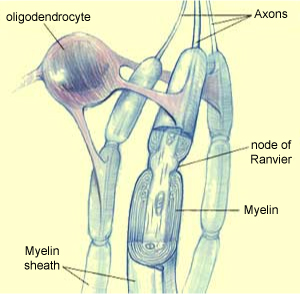|
|
| Funding for this site is provided by readers like you. | |
|
|
|
|
|||||
|
|
|||||||
|
|
|
|
|
|
|
|
What makes the human brain so powerful is the formidable ability of its basic unit, the neuron, to integrate information from myriad sources. Every neuron receives nerve impulses from several thousand other neurons. Some of these impulses are excitatory and tend to trigger another impulse in the neuron. But others are inhibitory and reduce the probability of a new impulse being triggered. Small potentials are generated in the neuron’s dendrites and cell body as a result of the neurotransmitter’s binding to its synaptic receptor. The passive diffusion of these receptor potentials (their intensity diminishes with distance travelled) results in the summation of their excitatory and inhibitory effects. It is at the neuron’s implantation cone (the point where the axon emerges from the cell body) that the result of this summation is decisive. If the sum exceeds the neuron’s excitatory threshold, a new nerve impulse will be generated and will travel down the axon. But if the sum remains below this threshold, no nerve impulse will be sent to the next neuron. The following animation shows one possible scenario for communication between neurons. Click on “B” and “C” to see two others.
Contrary to receptor potentials which propagate
passively while losing speed, the nerve impulses generated at the
base of the axon, also known as action
potentials, propagate actively with no signal loss. |
|
||||||||||||||||||||||||||||||||||||||||||||||
Glial Cells Too Are Sensitive to the Environment |
Axons often have an insulating sheath that lets nerve impulses travel faster. This sheath is made of a fatty substance called myelin, which consists of glial cell membranes wrapped around the axon. The myelin of the neurons in the brain is composed of oligodendrocytes, while that of the neurons in the peripheral nervous system is composed of Schwann cells.
Myelin thus saves
both considerable space and considerable energy. |
| |
|
|
|
|
|
|
|
|





